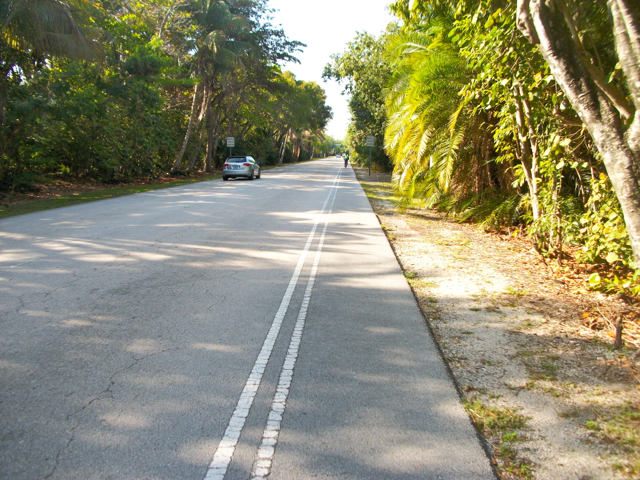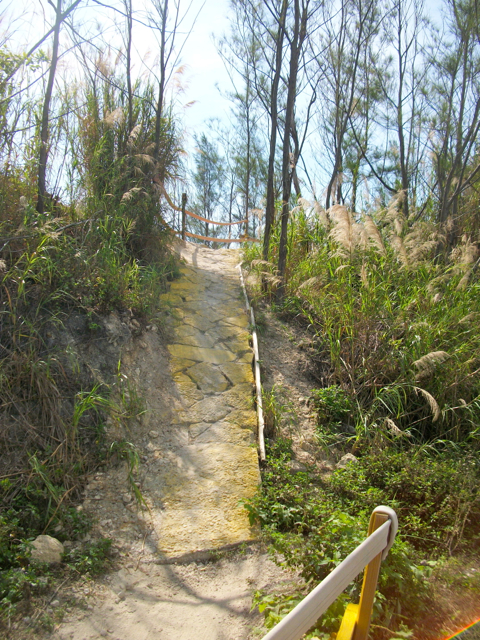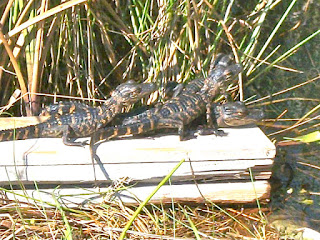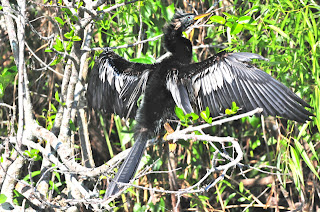Dry Tortugas National Park is one of 59 national parks in the USA and the 46th I've visited so far. Located on Garden Key 68 miles west of Key West Florida, it is closer to Cuba than to the US mainland. The island is ten acres in size, and nine of those acres are inside the fort's walls. This aerial photo shows the six-sided fort which was designed to have 420 cannons, with 125 of them able to zero in on any target at the same time.

Called Fort Jefferson, it was part of an ambitious effort of nearly 30 coastal defenses built by the US between 1817 and 1867 to protect the Gulf and Atlantic coastlines from enemy attack. This massive building program was occasioned by the burning of Washington D.C. by the British during the War of 1812. Fort Jefferson commanded the entranceway to the Gulf of Mexico and was to be an important part of the defense system. This fort is the largest masonry structure in the Western Hemisphere, containing over 16 million bricks, and it was never fully completed! Its nickname is the "Gibraltar of the Gulf of Mexico." In 1908, President Theodore Roosevelt made the area Tortugas Keys Reservation, setting it aside as a bird refuge. In 1935, President Franklin Roosevelt visited and declared it Fort Jefferson National Monument, and in 1992 it achieved national park status.

This series of small islands was called "Tortugas" by Ponce de Leon when he discovered it in 1513 because it had an abundance of turtles. It then became "Dry" Tortugas because the only potable water is that captured from rain. The fort was designed with 109 cisterns buried beneath the structure which would hold an astonishing 1,500,000 gallons of drinking and cooking water. A series of pipes brought the water from the roof, down through the walls, and into the cisterns. This wonderful system was clever except that the immense weight of the structure cause cracks to develop in 100 of the tanks and seawater contamination made the system useless.
Here you see the "parade" area of the fort, the central court where training and recreation activities took place. Remains of barracks buildings and other structures are evident as you walk the grounds. They also had a small garden for vegetables and fruits, but not nearly enough for two thousand prisoners and soldiers.
The fort was never attacked but was garrisoned by hundreds of troops. Its 450 planned cannon would have been handled by 1500 men, all protected by three foot thick walls and a moat with a drawbridge. By 1888, weaponry (powerful rifled cannon) existed which could have blasted through the structure's thick walls, so construction was terminated. In short, Fort Jefferson was designed to be a massive gun platform, impervious to assault, and able to destroy any enemy ships foolhardy enough to come within range of its powerful guns.
During the Civil War, the North housed its own military prisoners here -- deserters, insubordination offenders, criminals, etc., including most famously, the four "Lincoln Assassination conspirators." Eight had been convicted but only four were executed. The most famous of the prisoners was Dr. Samuel Mudd who had been convicted for doctoring the leg of John Wilkes Booth. After serving four years here, Dr. Mudd was pardoned by President Andrew Jackson for his heroic service treating prisoners afflicted with Yellow Fever in the prison.
In this photo you see the series of "casemates" or gunrooms with thick outer walls and arching vaulted ceilings, both designed to protect the guns and personnel from enemy artillery. Each casemate contained a cannon and firing team, and there are a total of 303 of these rooms in the fort's six sides and two floors.
This moat further protected the structure from being breached by enemy attack. The wall had been dug from 1849 to 1851, but the full depth wasn't dug until 1873.
Several beaches are now open to visitors for swimming and snorkeling, and the area behind this photo is the campground where overnight guests can set up camp.
Access to the park is by private boat, seaplane, or the
Yankee Freedom II ferry from Key West ($165 in 2012.)
The Carnegie Institute's Laboratory for Marine Biology was established among the Dry Tortugas in 1905. Based on Loggerhead Key, this research facility laid the foundation for 20th century tropical marine science, with an emphasis on coral reef systems. 299 species of birds make use of these keys as they migrate or mate.
A Research Natural Area (RNA) was established in the Dry Tortugas January 19, 2007. The RNA adds a new layer of protection for the marine resources of Dry Tortugas National Park. The RNA is a 46 square mile no-take no-anchor ecological preserve that provides a sanctuary for species affected by fishing and loss of habitat.
















































